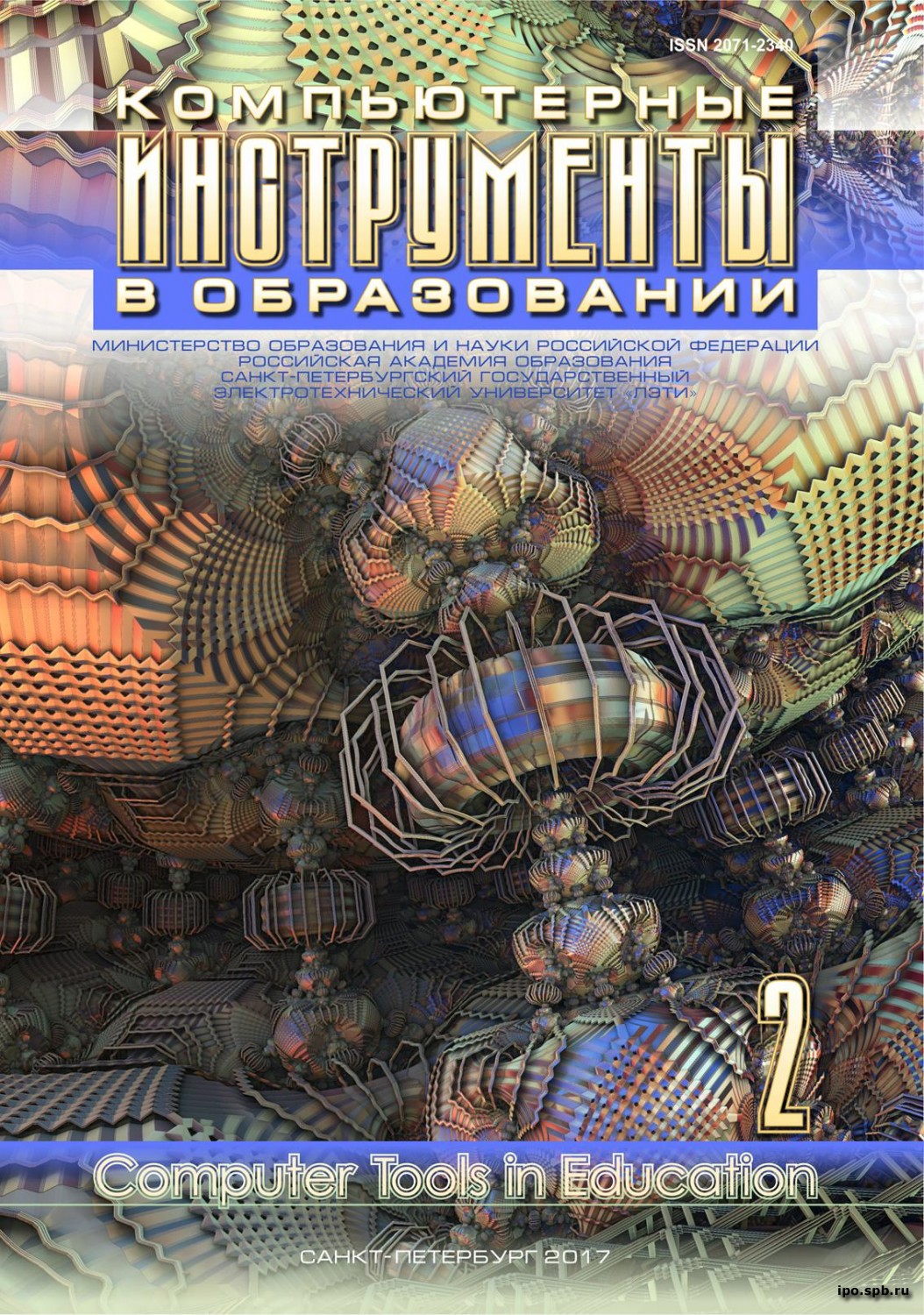Computer Algebra System as a Pedagogical Task
Abstract
The experience of organizing a student group project for developing components of a computer algebra system as one of the types of educational activity in a course of discrete mathematics is presented in this article; it is related to algorithms for long integer and polynomial arithmetic. A special feature of the organization of this work is a targeted selection of a “boundary object”, which is the basis of the common information space.
As boundary object was chosen the structure of the technical assignment for the development of the computer algebra system, in which the names of the modules and the relations between them were fixed, but neither the language nor the data structure were fixed.
The use of such a boundary object for the organization of a common information space, on the one hand, provided sufficient freedom for student groups to make decisions on the architecture of the system being created, on the other hand, accurately determined the parameters of the work performed, which allowed to compare the results of the work of different groups and assess the quality of the work performed and the quality of the organization of the joint activities in the groups.
The results of the work and students’ written evaluations showed that this educational method gives good results as far as the quality of the completed projects is concerned and is highly appreciated by the students themselves, justifying their expectations from studying at a technical university.
References
[2] “Naskol'koprogrammistunuzhnoznaniematematiki v rabote [How much does a programmer need knowledge of mathematics in his work?],” in tproger.ru, 2015,[Online]. Available:https://tproger.ru/experts/2/(in Russian).
[3] “Naskol'koprogrammistunuzhnoznat' matematiku? Chtodumayut v Yandekse[How much does a programmer need to know math? Thinking in Yandex],” in habrahabr.ru, 2014,[Online]. Available:https://habrahabr.ru/company/yandex/blog/239339/ (in Russian).
[4] L.V.Gorodnyaya andN.A.Kalinina,“Komp'yuternaya algebra ifunktsional'noeprogrammirovaniekakbazovyekomponentynauchnogoinstrumentariya [Computer algebra and functional programming as the basic components of scientific tools],”in Informatsionnyetekhnologii v nauke, obrazovanii, telekommunikatsii, biznese, Crimea, Ukraine, 2000, pp. 81–84(in Russian).
[5] N.A. Kalinina, “Cistemykomp'yuternoialgebrykakneobkhodimayakomponentaobrazovatel'nykhtekhnologii” in Nauchnyiservis v seti Internet, 2002, [Online]. Available:http://www.ict.edu.ru/vconf/index.php?a=vconf&c=getForm&
r=thesisDesc&d=light&id_sec=26&id_thesis=396 (in Russian).
[6] I.E. Lyublinskaya,“TI-NspireTM CAS tekhnologiidlyaizucheniyamatematiki I osnovnykhnauchnykhdistsiplin” [TI-Nspire CAS technology for studying mathematics and basic scientific disciplines],Computer tools in education journal. 2013. no. 1.pp. 15–21.(in Russian).
[7] Wolfram Mathematica: Modern Technical Computing [Online]. Available: http://www.wolfram.com/
[8] MathPartner[Online]. Available: http://mathpar.com/ru/
[9] E.S.Polat and M.Yu.Bukharkina,Novyepedagogicheskieiinformatsionnyetekhnologii v sistemeobrazovaniya[New pedagogical and information technologies in the education system],Moscow, Russia:Izdatel'skiitsentr «Akademiya», 2008 (in Russian)
[10] L.A.Bokov, M.Yu.Kataev, and A.F.Pozdeeva,“Tekhnologiyagruppovogoproektnogoobucheniya v vuzekaksostavlyayushchayametodikipodgotovkiinnovatsionno-aktivnykhspetsialistov” [Technology of group project training in the university as a component of the methodology of training innovative and active specialists],Sovremennyeproblemynaukiiobrazovaniya.no. 6, 2013 (in Russian)
[11] Yu.A.Kovalenko and L.L.Nikitina,Proektnayadeyatel'nost' studentov v obrazovatel'nomprotsessevuza [Project activities of students in the educational process of the university]VestnikKazanskogotekhnologicheskogouniversiteta,Vol. 15, no. 20,pp. 229–231,2012 (in Russian)
[12] PRAZE[Online]. Available: http://peerreview.cis.unimelb.edu.au/tools/about-praze/
[13] R.A.Mulder and J.M. Pearce,“PRAZE: Innovating teaching through online peer review,”In ICT: Providing choices for learners and learning. Proceedingsascilite.Singapore, 2007.
[14] S.N.Pozdnyakov and S.V. Rybin,Diskretnayamatematika: uchebnikdlyavuzov[Discrete mathematics: a textbook for high schools], Moscow, Russia: Akademiya, 2008 (in Russian).
[15] L.Bannon and S.Bodker,“Constructing Common Information Spaces,”In4th European Conf. on Computer Supported Cooperative Work (ECSCW’97), Lancaster, UK, 7–11 Sept. 1997, pp. 81–96.

This work is licensed under a Creative Commons Attribution 4.0 International License.







